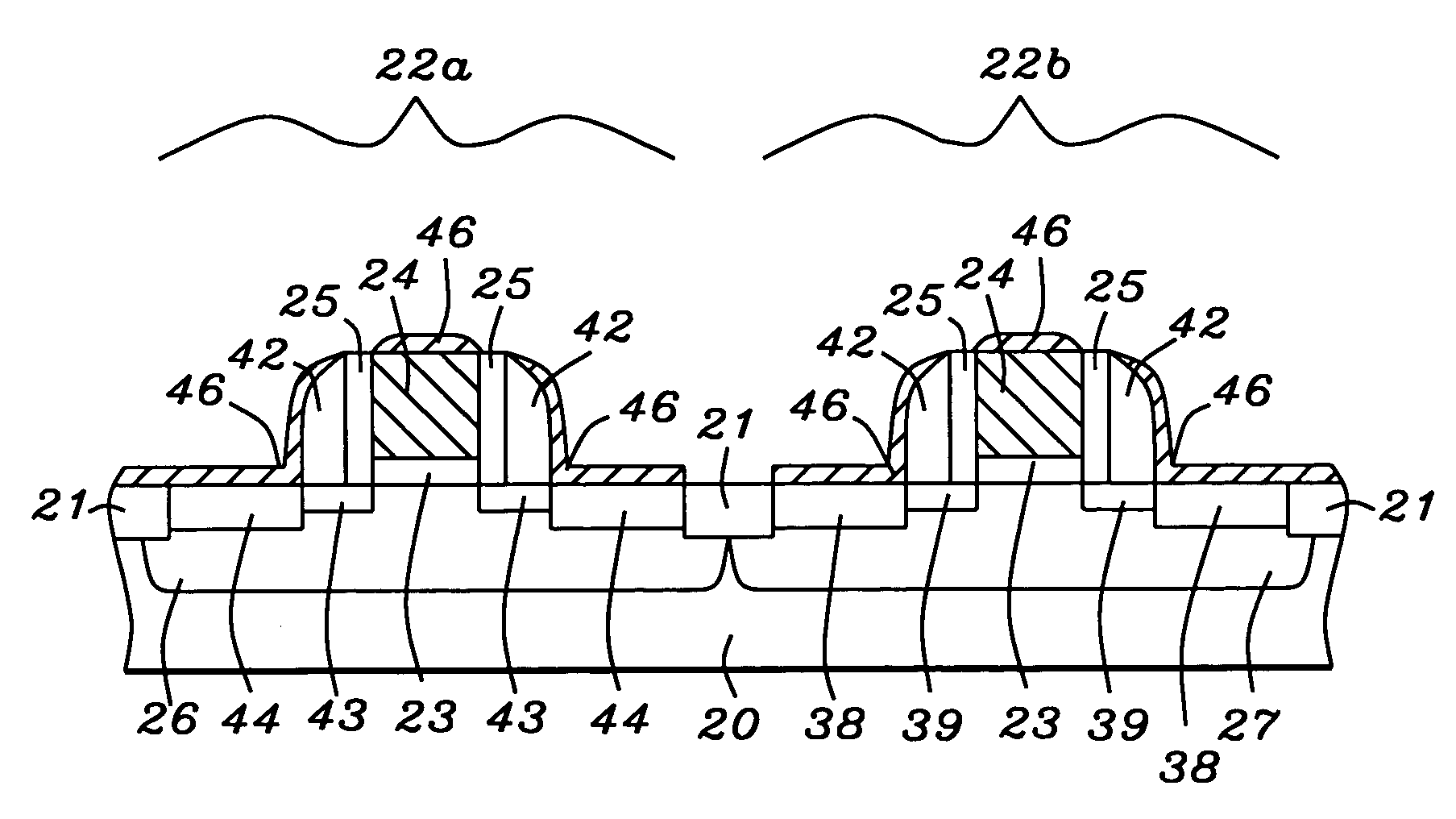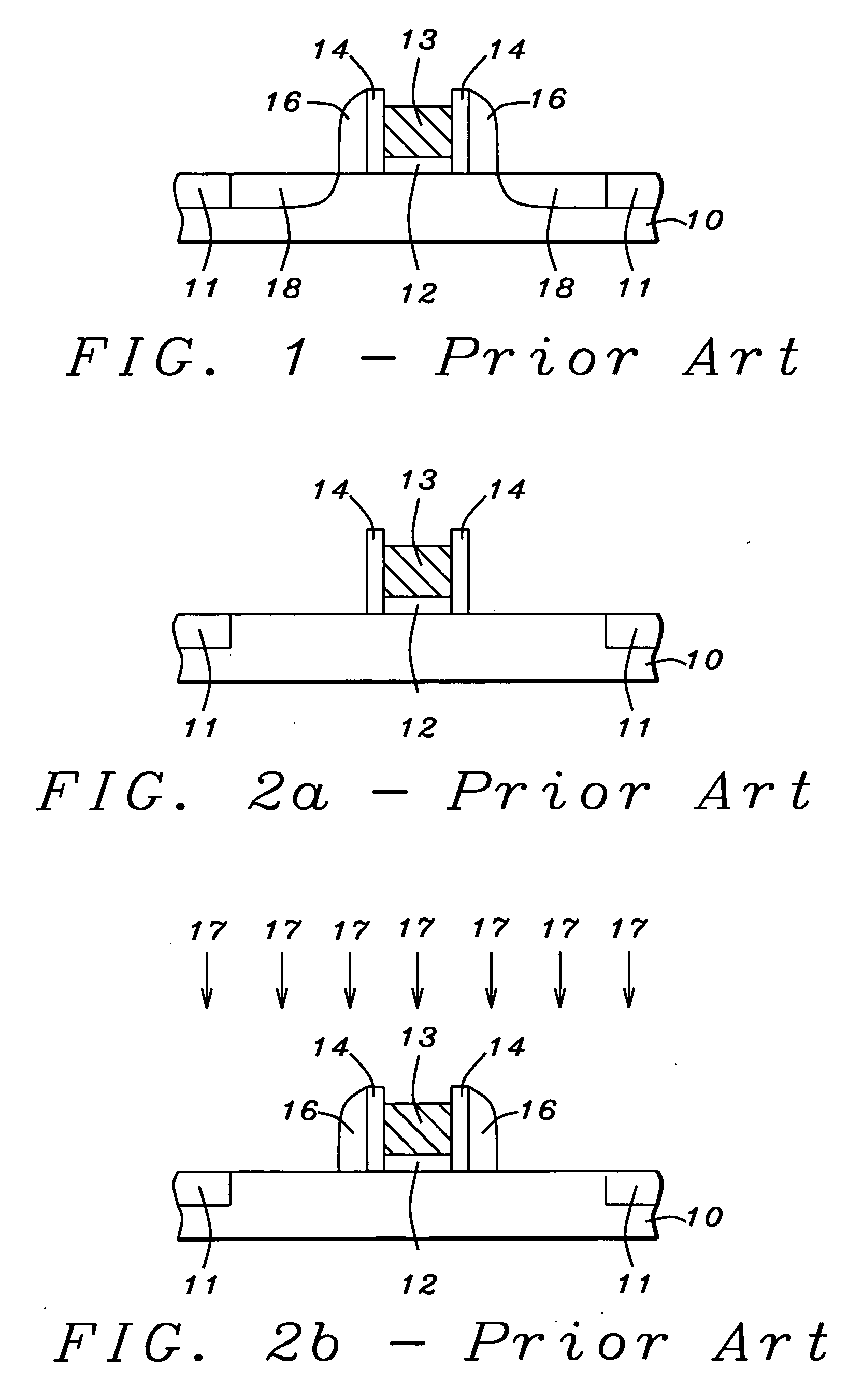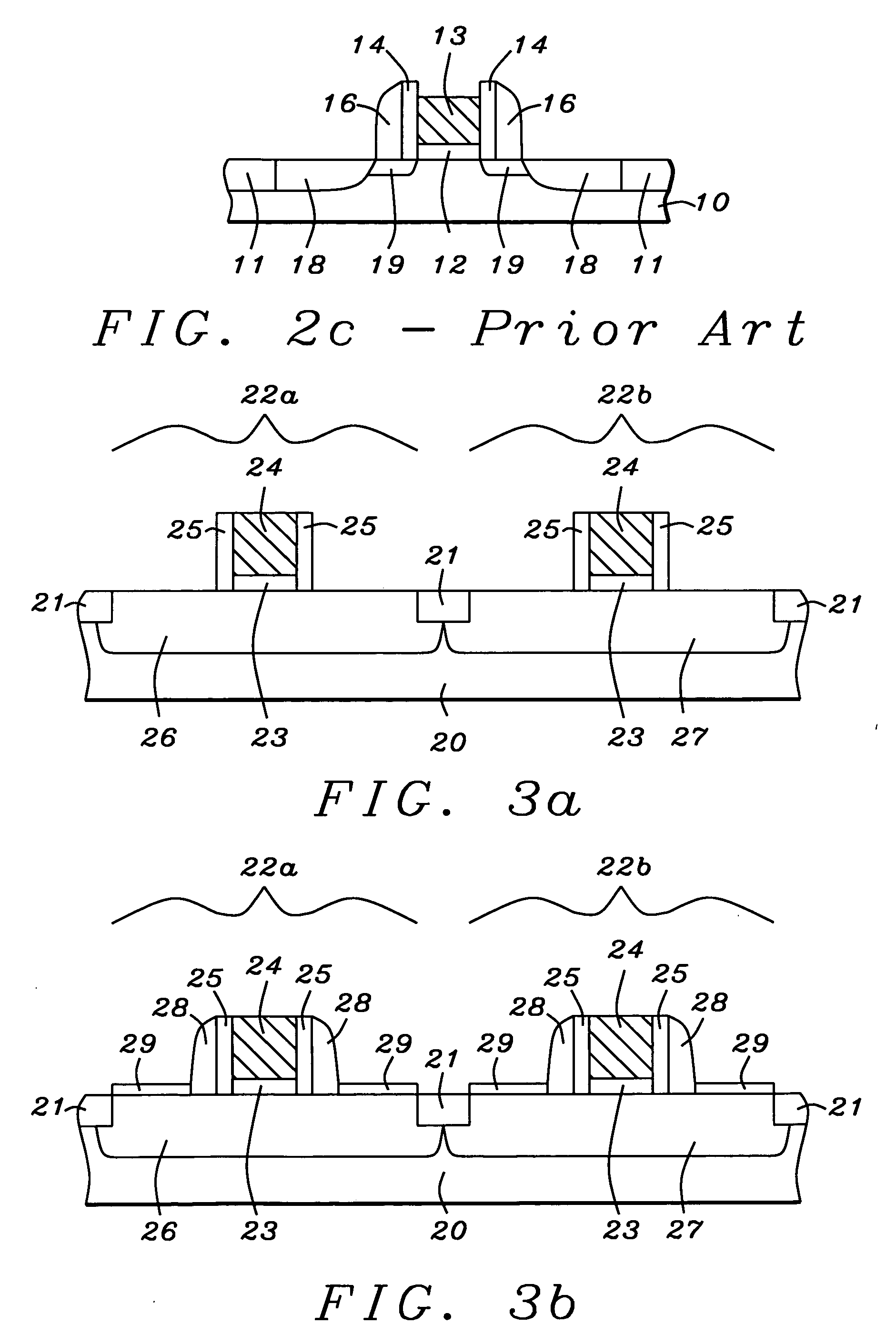Temporary self-aligned stop layer is applied on silicon sidewall
a technology of silicon sidewall and stop layer, applied in the direction of semiconductor devices, electrical apparatus, transistors, etc., can solve the problems of increasing the resistivity of source/drain regions, affecting device performance, and difficult to achieve both desirable features at the same time, so as to reduce the series resistance of shallow areas
- Summary
- Abstract
- Description
- Claims
- Application Information
AI Technical Summary
Benefits of technology
Problems solved by technology
Method used
Image
Examples
second embodiment
[0026] The present invention is a method of forming a transistor on a semiconductor substrate in which silicon sidewalls are formed adjacent to first sidewall spacers next to a gate electrode. The silicon sidewalls enable an extended salicide structure to be fabricated in a subsequent sequence of steps that lead to a lower resistivity. In one embodiment, a method is provided for forming NMOS and PMOS transistors simultaneously on a substrate. In a second embodiment, a method is described for fabricating a MOS transistor according to the present invention. The drawings are provided by way of example and are not intended to limit the scope of the invention
first embodiment
[0027] The first embodiment is illustrated in FIGS. 3a-3h. Referring to FIG. 3a, a substrate 20 is provided with isolation regions 21 that may be shallow trench isolation (STI) regions, for example. The isolation regions 21 separate a first active region 22a that includes an N-well 26 from a second active region 22b that has a P-well 27. The substrate 20 is preferably monocrystalline silicon. The isolation regions 21 are typically comprised of silicon oxide or a low k dielectric material such as carbon doped SiO2 or fluorine doped SiO2. Field oxide (FOX) regions or mesa isolation regions known to those skilled in the art may be used instead of STI regions.
[0028] A gate dielectric layer 23 is formed on the substrate 20 by a conventional method and may be comprised of silicon oxide or a high k dielectric material such as Ta2O5, TiO2, Al2O3, ZrO2, HfO2, Y2O3, La2O5 and their aluminates and silicates. A gate that is preferably comprised of polysilicon having a thickness between about 15...
PUM
| Property | Measurement | Unit |
|---|---|---|
| width | aaaaa | aaaaa |
| width | aaaaa | aaaaa |
| thickness | aaaaa | aaaaa |
Abstract
Description
Claims
Application Information
 Login to View More
Login to View More - R&D
- Intellectual Property
- Life Sciences
- Materials
- Tech Scout
- Unparalleled Data Quality
- Higher Quality Content
- 60% Fewer Hallucinations
Browse by: Latest US Patents, China's latest patents, Technical Efficacy Thesaurus, Application Domain, Technology Topic, Popular Technical Reports.
© 2025 PatSnap. All rights reserved.Legal|Privacy policy|Modern Slavery Act Transparency Statement|Sitemap|About US| Contact US: help@patsnap.com



